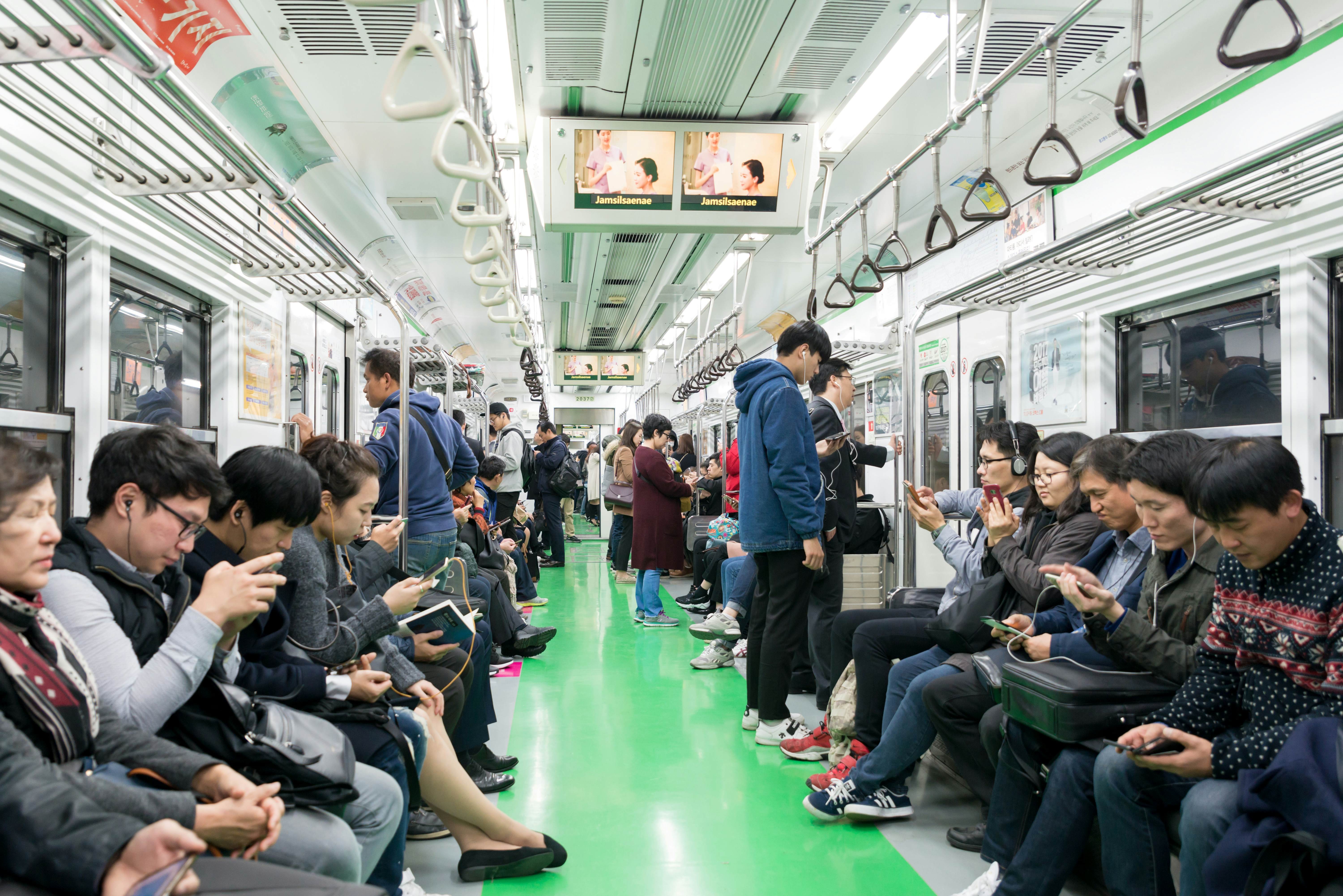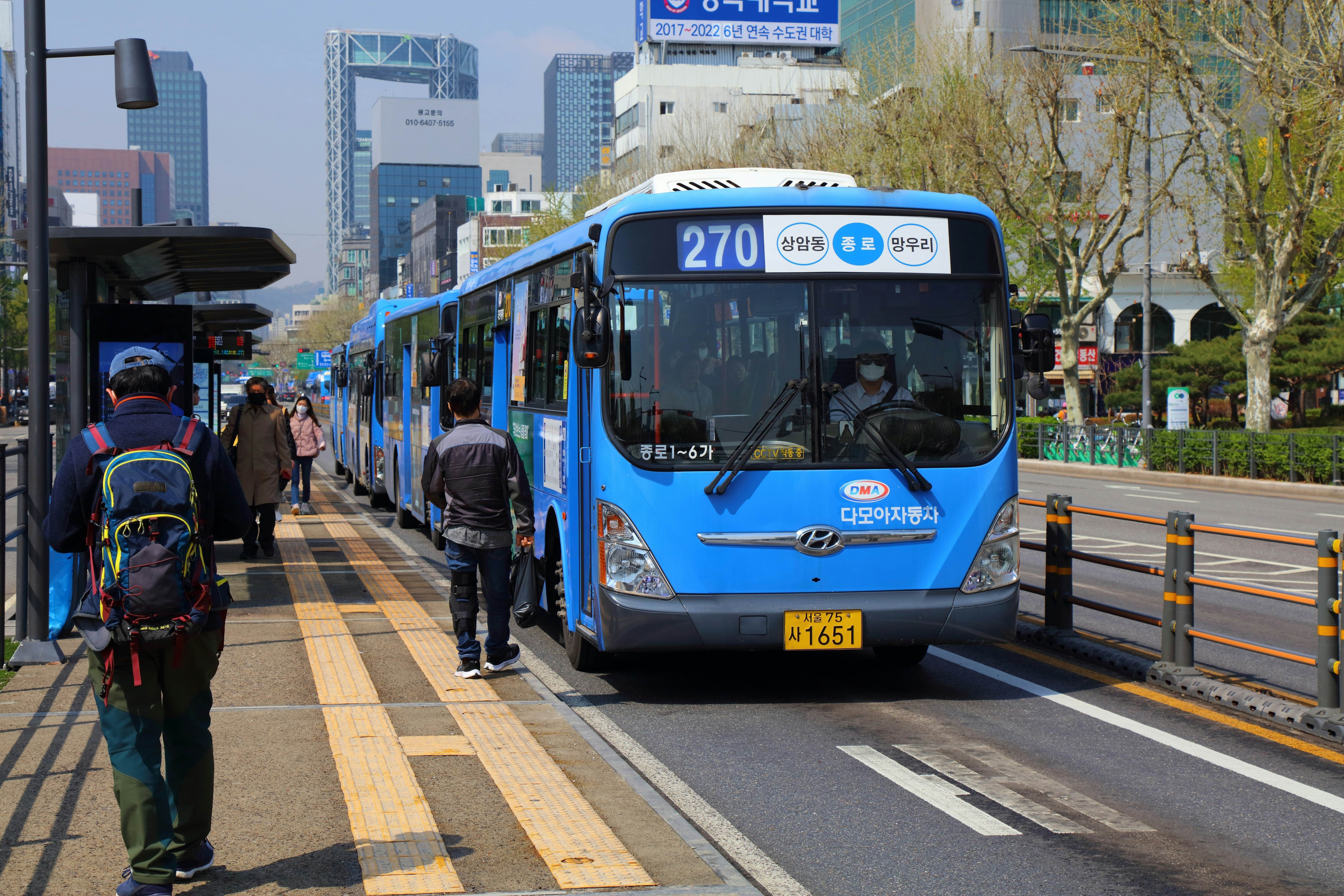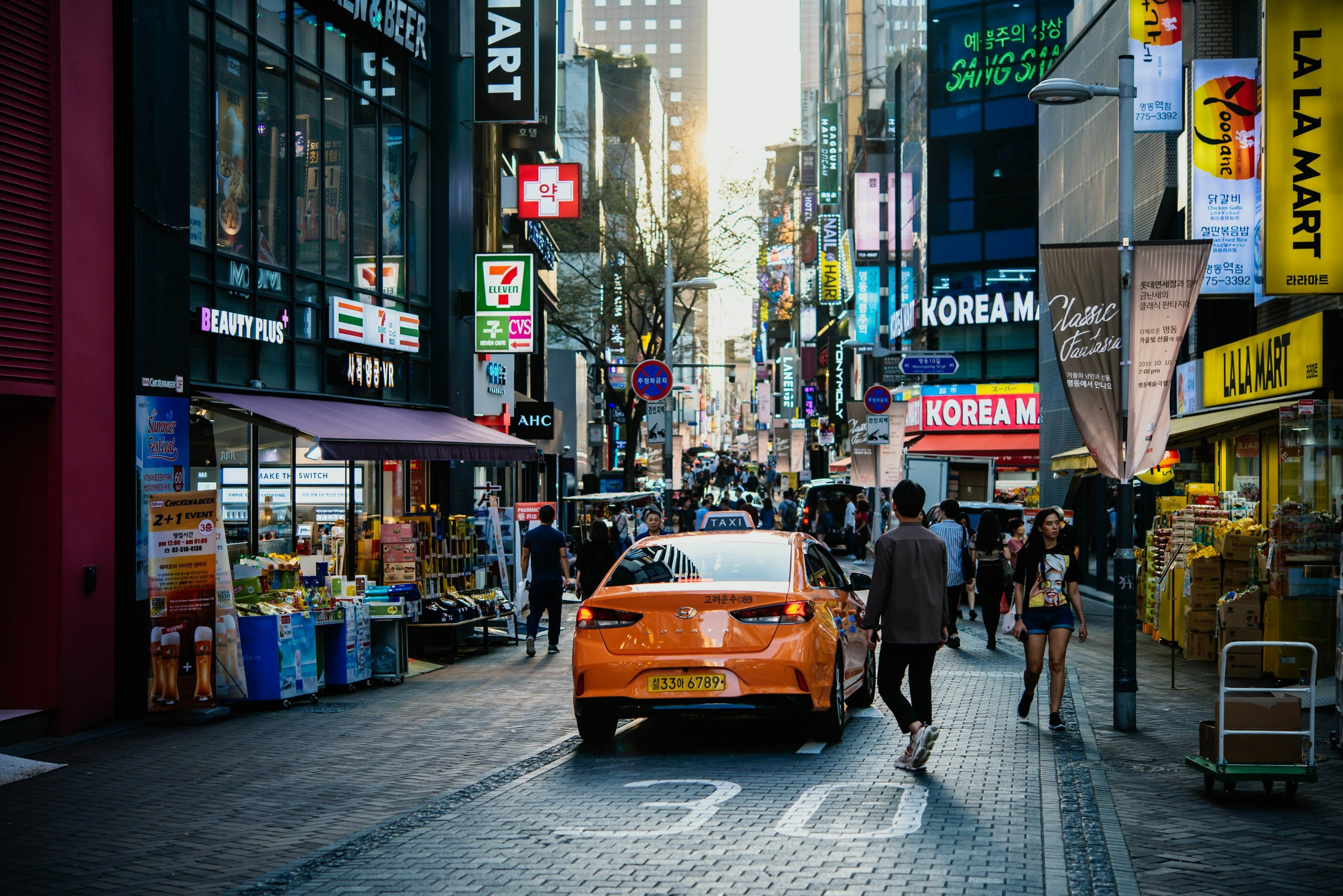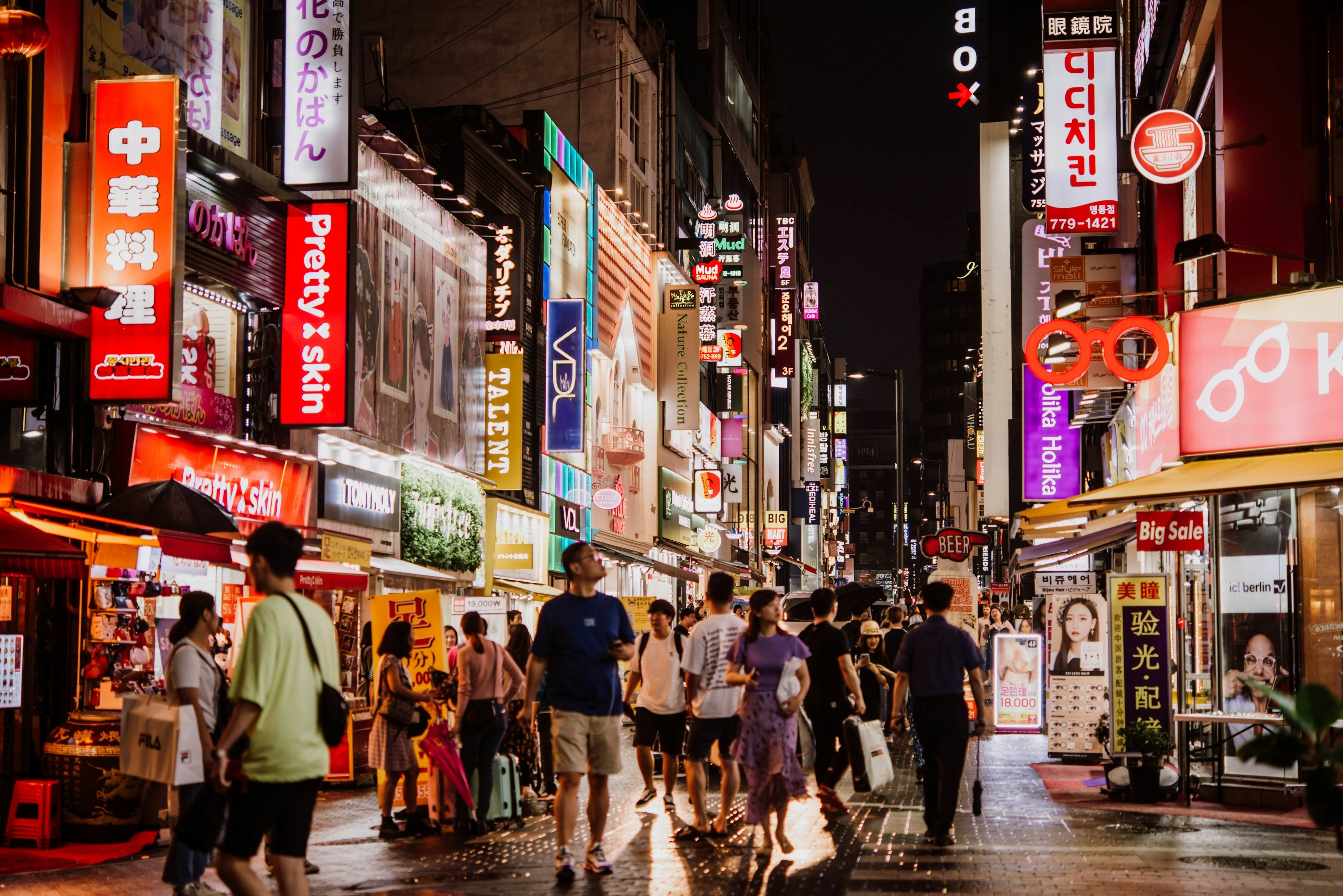Planning a trip to Seoul? Discover How To Travel To And Around Seoul with ease! TRAVELS.EDU.VN offers expert tips on navigating Seoul’s efficient transport, from the subway to buses, making your Korean adventure seamless. Explore Seoul’s vibrant culture and iconic landmarks with insider travel tips and efficient transportation options.
1. Understanding Seoul’s Transportation Landscape
Seoul, a bustling metropolis, boasts a world-class transportation system that makes navigating the city a breeze. From its extensive subway network to its comprehensive bus routes and readily available taxis, Seoul offers a variety of options to suit every traveler’s needs and preferences. Understanding the basics of Seoul’s transportation is crucial for planning your trip effectively and maximizing your time in this dynamic city.
1.1. Seoul’s Efficient Subway System
The Seoul Metropolitan Subway is the backbone of the city’s transportation network. With over 20 lines crisscrossing the city, the subway provides a fast and affordable way to reach most destinations. The subway system is known for its cleanliness, punctuality, and user-friendly design. Each station is clearly marked with English signage, and announcements are made in multiple languages, including English, Korean, Chinese, and Japanese.
 Passengers inside a partially full metro car.
Passengers inside a partially full metro car.
1.2. Comprehensive Bus Network in Seoul
Seoul’s bus network complements the subway system, providing access to areas not directly served by the subway. Buses are color-coded according to their routes and purposes, making it easy to identify the right bus for your destination. Similar to the subway, bus stops are equipped with digital displays showing real-time arrival information, and announcements are made in multiple languages.
 People board blue buses in a dedicated lane on a city street with office buildings in the background.
People board blue buses in a dedicated lane on a city street with office buildings in the background.
1.3. Taxis and Ridesharing in Seoul
Taxis are readily available throughout Seoul, offering a convenient option for late-night journeys or when traveling with a group. While ridesharing services are available, they may require a Korean phone number for registration. International Taxi Service provides pre-booked cabs for tourists.
 An orange taxi drives on a narrow city street filled with pedestrians and businesses.
An orange taxi drives on a narrow city street filled with pedestrians and businesses.
2. Essential Transport Passes for Seoul
Using a transport pass is the most convenient and cost-effective way to pay for public transportation in Seoul. These passes can be used on buses, subways, and even taxis, saving you time and hassle compared to purchasing individual tickets.
2.1. T-money Card: A Versatile Option for Seoul Travel
T-money is a rechargeable contactless card that can be used on all forms of public transportation in Seoul and many other cities in South Korea. You can purchase and recharge a T-money card at convenience stores, subway stations, and transport hubs.
Benefits of using a T-money card:
- Convenient and easy to use
- Saves time compared to purchasing individual tickets
- Offers discounted fares compared to cash payments
- Can be used at affiliated retailers
2.2. NAMANE Card: Customizable Transport Pass for Seoul
The NAMANE card offers a unique feature allowing you to customize the card design with your own photos. It functions similarly to T-money, providing seamless access to public transportation and affiliated retailers.
2.3. Cashbee Card: Another Convenient Option for Seoul
Cashbee is another widely accepted transport card in South Korea. It offers similar functionality to T-money and NAMANE, providing a convenient way to pay for public transportation and make purchases at participating stores. While T-money is more widely accepted, Cashbee remains a solid option.
Comparison of Transport Passes
| Feature | T-money | NAMANE | Cashbee |
|---|---|---|---|
| Availability | Convenience stores, subway stations, hubs | Kiosks at transport hubs, digital via app | Convenience stores, transport hubs |
| Customization | Limited edition designs available | Customizable with personal photos | Standard designs |
| Retailer Use | Widely accepted | Accepted at affiliated retailers | Accepted at affiliated retailers |
| Refund | Possible at Incheon Airport | Check specific terms | Check specific terms |
3. Mastering the Seoul Subway System
The Seoul subway system is a marvel of efficiency and convenience, but navigating it can seem daunting at first. Understanding the layout, etiquette, and ticketing options will help you make the most of this valuable resource.
3.1. Navigating the Seoul Subway Map
The Seoul subway map can appear complex, but it is actually quite logical once you understand the basics. Each line is assigned a number and a color, making it easy to follow your route. Stations are clearly marked with English and Korean signage, and transfer points are indicated with symbols.
- Download a Subway App: Use apps like the Seoul Metro app for iPhone or Android to navigate with ease. These apps provide real-time information, route planning, and estimated travel times.
- Plan Your Route: Before you start your journey, take a moment to plan your route and identify any transfer points.
- Follow the Signs: Pay attention to the signs and announcements at each station to ensure you are on the right track.
3.2. Understanding Subway Fares and Ticketing in Seoul
Subway fares in Seoul are based on distance traveled. The base fare starts at ₩1400 (US$0.97) per ride with a transport pass. You can purchase single-journey tickets at vending machines in the station, but using a T-money card or other transport pass is much more convenient and cost-effective.
Subway Fare Chart (using T-money)
| Distance | Fare (KRW) | Fare (USD) |
|---|---|---|
| Base Fare | 1400 | 0.97 |
| Additional (per 5km) | 100 | 0.07 |
3.3. Seoul Subway Etiquette: Unspoken Rules for Riders
Seoul’s subway culture emphasizes respect and consideration for fellow passengers. Adhering to these unspoken rules will help you avoid unwanted attention and contribute to a pleasant experience for everyone.
- Line up to Board: Form orderly lines outside the train doors and wait for passengers to exit before boarding.
- Respect Priority Seating: Priority seats are reserved for the elderly, pregnant women, and passengers with disabilities.
- Keep Noise Levels Down: Avoid talking loudly on your phone or playing music without headphones.
- Don’t Eat or Drink: Eating and drinking are generally discouraged on the subway.
4. Exploring Seoul by Bus: A Detailed Guide
While the subway is a popular choice, Seoul’s bus network offers a unique way to experience the city. Understanding the different types of buses, their routes, and payment methods will allow you to explore Seoul’s hidden gems and residential areas.
4.1. Types of Buses in Seoul: Color-Coded System
Seoul’s buses are color-coded to indicate their routes and purposes. This system makes it easy to identify the right bus for your destination.
- Blue Buses: Major routes across the city.
- Green Buses: Connect subway stations with residential areas. Smaller maeul green buses stay within neighborhoods.
- Red Buses: Express buses connecting Seoul with outer regions.
- Yellow Buses: Circulate popular tourist destinations.
4.2. Bus Fares and Payment Methods in Seoul
Bus fares in Seoul vary depending on the type of bus. As with the subway, using a T-money card or other transport pass is the most convenient way to pay.
Seoul Bus Fare Chart (using T-money)
| Bus Type | Fare (KRW) | Fare (USD) |
|---|---|---|
| Blue/Green | 1500 | 1.04 |
| Maeul Green | 1200 | 0.83 |
| Red | 3000 | 2.08 |
| Yellow | 1400 | 0.97 |
| Night Bus | 2500 | 1.73 |
4.3. Bus Stop Information and Route Planning in Seoul
Bus stops in Seoul are equipped with digital displays showing real-time arrival information and route details in both Korean and English. You can also use online resources and mobile apps to plan your bus routes and estimate travel times.
- KakaoMap: A comprehensive mapping app available in English. It can help you plan your journey from door to door.
- Naver Map: Similar to KakaoMap, but may require some Korean language knowledge.
4.4. Seoul Bus Etiquette: Tips for a Smooth Ride
While bus etiquette is less strict than on the subway, there are still a few things to keep in mind for a smooth and enjoyable ride.
- Tap Your Card: Tap your T-money card or other transport pass when boarding and alighting the bus.
- Offer Your Seat: Be prepared to offer your seat to the elderly, pregnant women, or passengers with disabilities.
- Avoid Loud Conversations: Keep noise levels down and avoid talking loudly on your phone.
5. Taxi and Ridesharing Options in Seoul
Taxis offer a convenient and comfortable way to get around Seoul, especially for late-night journeys or when traveling with a group. While driving your own car is not recommended due to traffic and parking difficulties, taxis provide a hassle-free alternative.
5.1. Types of Taxis in Seoul
Seoul taxis come in a variety of colors and sizes. The most common are silver or orange mid-size sedans that can accommodate up to four passengers. Black “deluxe” taxis offer a higher level of service and charge a higher fare.
5.2. Taxi Fares and Payment Methods in Seoul
Taxi fares in Seoul are metered. The base fare starts at ₩4800 (US$3.33), with additional charges based on distance traveled. You can pay with cash, credit card, or T-money card.
5.3. Ridesharing Apps in Seoul
While not as prevalent as in other countries, ridesharing apps are available in Seoul. Kakao T is a popular option, but may require a Korean phone number for registration.
5.4. Important Tips for Taking Taxis in Seoul
- Show the Destination in Korean: It is helpful to show the taxi driver the name of your destination written in Korean, as some places have similar names.
- Interpretation Hotline: If you need to explain your route in detail, you can call a free interpretation hotline.
- Avoid Short Journeys: Be aware that some taxi drivers may be reluctant to take short journeys.
6. Cycling and Walking in Seoul
For a more immersive experience, consider exploring Seoul by bike or on foot. The city offers dedicated cycling paths and pedestrian-friendly areas that allow you to discover hidden gems and soak in the local atmosphere.
6.1. Bike-Sharing Programs in Seoul
Ttareungi, with its distinctive white-and-green bicycles, is the best-known bike-share program in Seoul. You can create an account online and rent bicycles at various stations throughout the city.
6.2. Cycling Routes and Safety Tips in Seoul
Seoul has dedicated cycling paths, including the Hangang River Cycling Trail, which follows the Han River through the city. However, many roads do not have dedicated bike lanes, so cyclists often have to share the sidewalk with pedestrians.
- Wear a Helmet: Always wear a helmet when cycling in Seoul.
- Obey Traffic Laws: Follow traffic laws and signals.
- Be Aware of Pedestrians: Share the sidewalk with pedestrians and yield to them when necessary.
6.3. Walking Tours and Pedestrian-Friendly Areas in Seoul
Many of Seoul’s most popular attractions are located within walking distance of each other. Consider taking a walking tour or simply exploring the city on foot to discover hidden gems and soak in the local atmosphere.
- Gyeongbokgung Palace to Changdeokgung Palace: This scenic walk takes you past numerous attractions and cafes.
- Myeongdong: A vibrant shopping district with pedestrian-only streets.
- Insadong: A traditional neighborhood with tea houses, art galleries, and craft shops.
 A crowd of people walk at night on a pedestrian street in a city filled with lit-up signs.
A crowd of people walk at night on a pedestrian street in a city filled with lit-up signs.
7. Accessible Transportation Options in Seoul
Seoul is committed to providing accessible transportation options for people with disabilities. The subway and bus systems are equipped with features such as elevators, ramps, and priority seating to ensure that everyone can travel comfortably and safely.
7.1. Seoul Subway Accessibility Features
Seoul Metro is considered “mostly accessible” by organizations such as WheelchairTravel.org. Almost all subway stations have elevators, Braille tiles, accessible turnstiles, and accessible bathrooms.
7.2. Seoul Bus Accessibility Features
Almost all of Seoul’s buses have a ramp or a floor that can be lowered for those with mobility needs. Priority seating is also available.
7.3. Accessible Taxi Services in Seoul
Seoul Danurim is an organization that provides information and support for accessible travel in Seoul. They can help you find wheelchair-accessible taxis and provide information about accessible sightseeing.
8. Booking Your Seoul Adventure with TRAVELS.EDU.VN
Planning your trip to Seoul doesn’t have to be overwhelming. TRAVELS.EDU.VN specializes in crafting seamless and unforgettable travel experiences, ensuring you see the best of Seoul without the stress.
8.1. Tailored Travel Packages for Every Interest
Whether you’re a history buff eager to explore ancient palaces, a foodie craving authentic Korean cuisine, or a K-pop enthusiast wanting to visit iconic filming locations, TRAVELS.EDU.VN offers customized travel packages to match your passions. We handle all the details, from flights and accommodations to transportation and tours, so you can focus on enjoying your adventure.
8.2. Insider Access and Exclusive Experiences
TRAVELS.EDU.VN provides access to unique experiences that go beyond typical tourist attractions. Imagine participating in a traditional Korean cooking class, exploring hidden alleyways with a local guide, or attending a private K-pop dance lesson. We curate unforgettable moments that immerse you in the heart of Seoul’s culture.
8.3. Stress-Free Travel Planning
Leave the logistics to us. TRAVELS.EDU.VN takes care of every aspect of your trip, including:
- Flights: Finding the best deals and convenient flight schedules.
- Accommodations: Selecting comfortable and well-located hotels that suit your budget and preferences.
- Transportation: Arranging airport transfers, subway passes, and transportation to all your destinations.
- Tours and Activities: Booking guided tours, cultural experiences, and exciting activities that align with your interests.
8.4. Unparalleled Customer Support
Our dedicated team is available 24/7 to provide support and assistance throughout your trip. Whether you have a question about your itinerary, need help with directions, or encounter any unexpected issues, we’re always here to help.
9. Why Choose TRAVELS.EDU.VN for Your Seoul Trip?
TRAVELS.EDU.VN stands out as the premier choice for planning your trip to Seoul, offering a range of benefits that ensure an exceptional and stress-free travel experience.
9.1. Expertise and Local Knowledge
We have a deep understanding of Seoul and its unique attractions. Our team of travel experts has personally explored every corner of the city, allowing us to provide insider tips and recommendations that you won’t find anywhere else.
9.2. Personalized Service
We believe that every traveler is unique, and we tailor our services to meet your specific needs and preferences. Whether you’re traveling solo, as a couple, or with a group, we’ll create a customized itinerary that exceeds your expectations.
9.3. Commitment to Quality
We are committed to providing the highest quality travel services. We partner with reputable hotels, tour operators, and transportation providers to ensure that every aspect of your trip is seamless and enjoyable.
9.4. Peace of Mind
With TRAVELS.EDU.VN, you can relax and enjoy your trip knowing that all the details are taken care of. We handle everything from flights and accommodations to transportation and activities, allowing you to focus on creating unforgettable memories.
9.5. Competitive Pricing
We offer competitive pricing on all our travel packages and services. We work hard to find the best deals and ensure that you get the most value for your money.
10. Practical Information for Traveling in Seoul
To ensure a smooth and enjoyable trip to Seoul, it’s important to be aware of some practical information, including currency, language, and local customs.
10.1. Currency and Payment Methods in Seoul
The currency in South Korea is the Korean Won (KRW). Credit cards are widely accepted in Seoul, but it’s always a good idea to carry some cash for smaller establishments and street vendors.
10.2. Language and Communication in Seoul
The official language of South Korea is Korean. While English is spoken in tourist areas, learning a few basic Korean phrases will be helpful and appreciated by locals.
10.3. Cultural Considerations in Seoul
South Korea has a rich and unique culture. It’s important to be aware of local customs and etiquette to show respect for the local people.
- Bowing: Bowing is a common greeting in South Korea.
- Removing Shoes: It’s customary to remove your shoes when entering someone’s home or a traditional restaurant.
- Respect for Elders: Show respect for elders by using polite language and offering assistance when needed.
10.4. Safety and Emergency Information in Seoul
Seoul is a safe city with a low crime rate. However, it’s always important to be aware of your surroundings and take precautions to protect yourself and your belongings.
- Emergency Numbers:
- Police: 112
- Fire/Ambulance: 119
- Travel Insurance: Consider purchasing travel insurance to protect yourself against unexpected events.
Ready to embark on your Seoul adventure? Contact TRAVELS.EDU.VN today at 123 Main St, Napa, CA 94559, United States, or call us on Whatsapp at +1 (707) 257-5400. Let us craft the perfect Seoul itinerary for you. Visit our website at travels.edu.vn to start planning your dream trip.
FAQ: How to Travel To and Around Seoul
Here are some frequently asked questions about traveling to and around Seoul:
- What is the best way to get from Incheon International Airport to Seoul?
- The AREX express train is a fast and convenient option. Airport buses and taxis are also available.
- Is it easy to use public transportation in Seoul if I don’t speak Korean?
- Yes, the subway and bus systems have English signage and announcements.
- What is a T-money card, and where can I buy one?
- A T-money card is a rechargeable transport pass. You can buy one at convenience stores and subway stations.
- How much does it cost to ride the subway in Seoul?
- The base fare is ₩1400 (US$0.97) with a T-money card.
- Are taxis expensive in Seoul?
- Taxis are reasonably priced, but fares can increase during late-night hours.
- Is it safe to walk around Seoul at night?
- Yes, Seoul is generally a safe city, even at night.
- What are some must-see attractions in Seoul?
- Gyeongbokgung Palace, Changdeokgung Palace, Myeongdong, and Insadong are popular choices.
- What is the best time to visit Seoul?
- Spring (April-May) and autumn (September-October) offer pleasant weather.
- Do I need a visa to travel to South Korea?
- Visa requirements vary depending on your nationality. Check with your embassy or consulate.
- What are some popular day trips from Seoul?
- The DMZ, Suwon Hwaseong Fortress, and Nami Island are popular choices.
